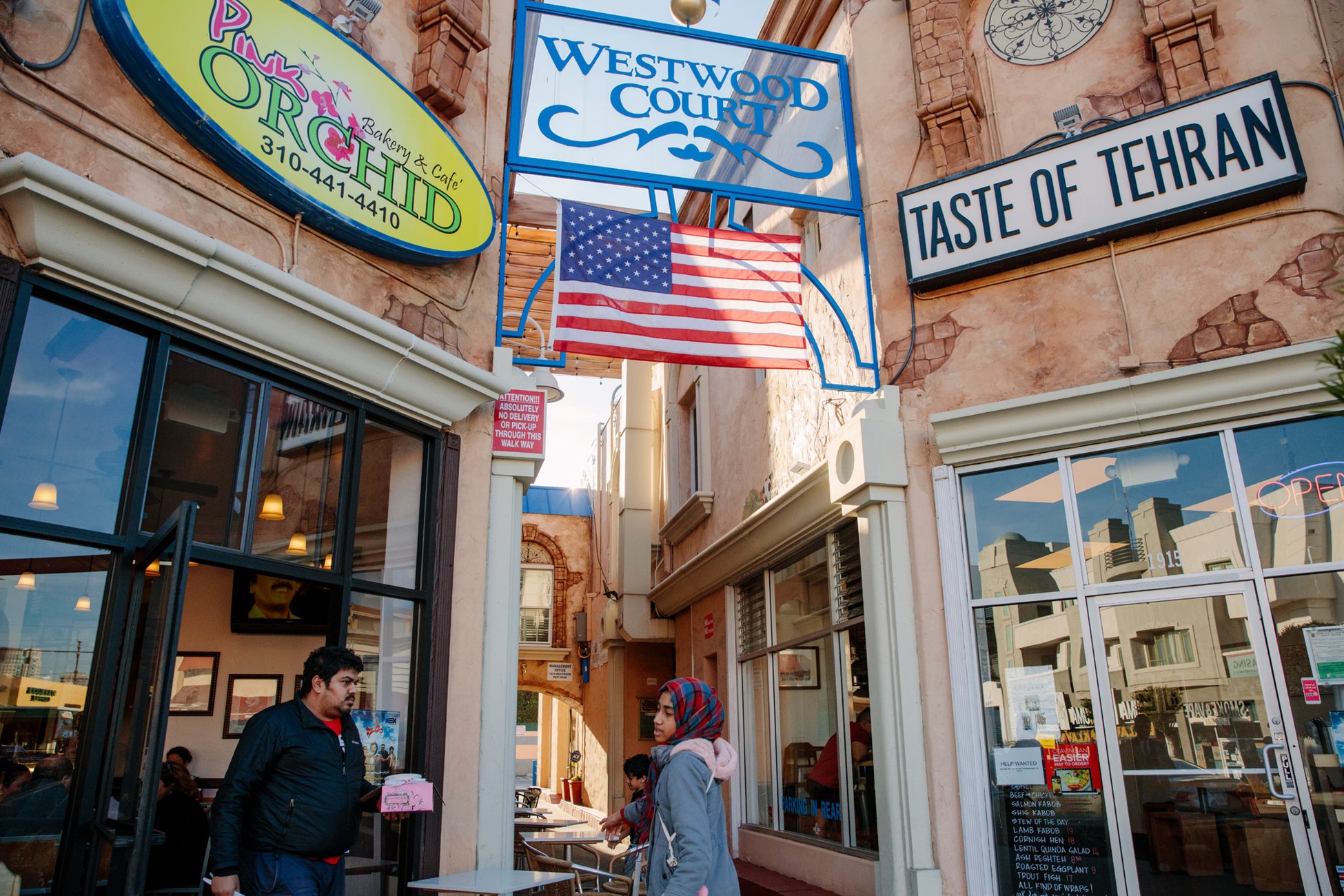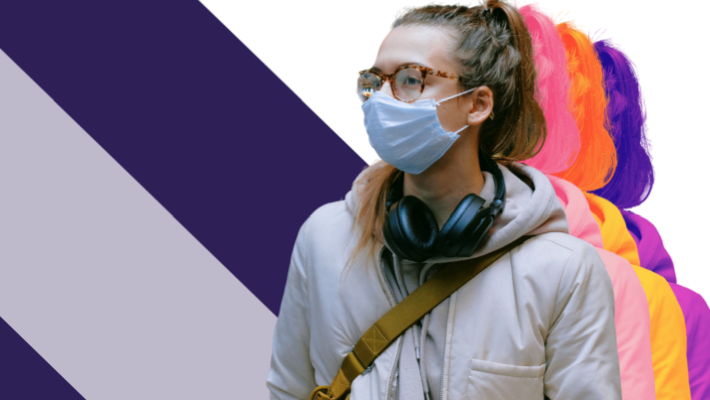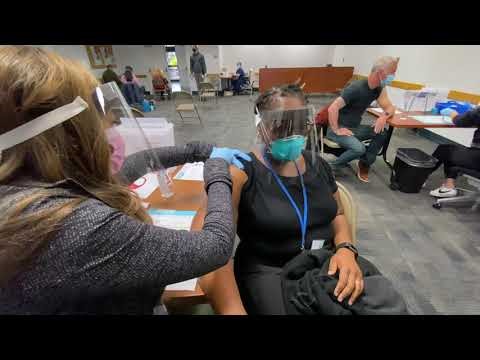
【Diwali Lighting Celebration. Photo Credit: Alamy.com】
Dining with Asian Food and Wine
October 2022: Diwali
By
Ronald Jan, M.D.
In India, possibly the most celebrated festival of the year begins on the 13th day of the dark half of the lunar month, Ashvina. This usually occurs in the latter half of October or early November. It is called, “Diwali” meaning “row of lights” to celebrate the victory of light over darkness, good over evil, knowledge over ignorance and to honor Lord Ganesh and Goddess Lakshmi. Commonly, Diwali is a post-harvest festival celebrating the bounty following the arrival of the monsoon. Families gather to celebrate and exchange gifts especially gifts of “mithai” (“sweets”). One such mithai is Gulab Jamun “Indian styled honey balls soaked in homemade syrup” featured at Mehfil’s Indian Restaurant in Roseville, California. (Indian People lighting candles celebrating Diwali. Photo Credit: Google.com)
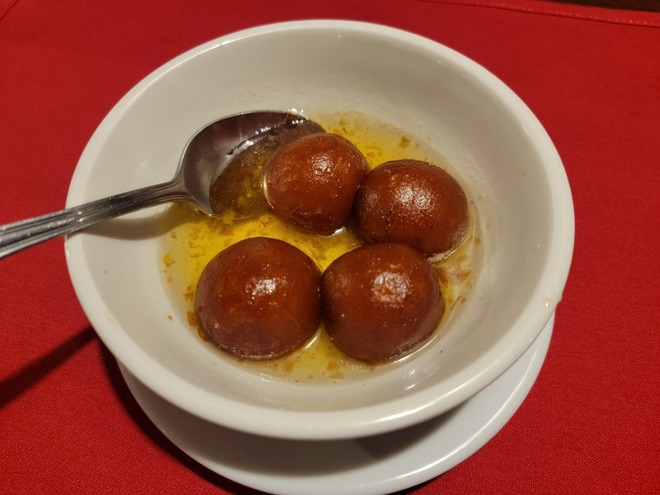
【Gulab Jamun at Mehfil’s Indian Restaurant. Photo Courtesy of Ronald Jan, M. D.】
Although most Asian desserts are only mildly sweet and would be overwhelmed by the sweetness of some dessert wines, this dessert is so sweet that it calls for a very sweet wine that may be affected by botrytis, a fungus that concentrates the flavors and lends a depth of sweetness prized by many. Such wines that would pair well with Gulab Jamun would be…
…a French Sauternes, sweet with high acidity and high alcohol with apricots and citrus peel and notes of toast and vanilla,

【French Sauternes. Photo Credit:wine-searcher.com 】
…a German Trokenbeerenauslese, sweet with low alcohol and flavors of honey, dried stone fruit (peaches and nectarines), candied peel,
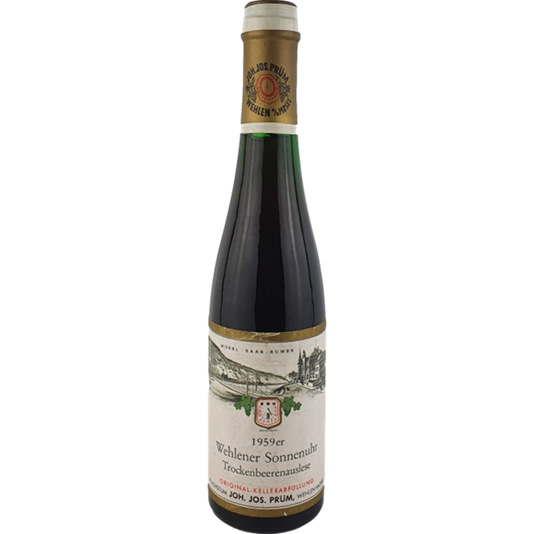
【German Trokenbeerenauslese. Photo Credit: wine-searcher.com】
…a Hungarian Tokaji Aszu, sweet with deep amber color and high acidity with aromas and flavors of orange peel, apricot, and honey,

【Hungarian Tokaji Aszu. Photo Courtesy of Ronald Jan, M. D.】
…a South African Vin de Constance (Constantia) from late harvest Muscat de Frontignan, sweet with notes of honey, apricot, pressed flowers, kumquat, and quince,
【Vin de Constance. Photo Credit: wine-searcher.com】
and
…a French Coteau du Layon’s Chaume in the Loire Valley sweet with floral aromas & flavors of stone fruit (e.g., peaches).

【Chenin Blanc from the Loire Valley’s Coteau du Layon. Photo Credit: totalwine.com】
No doubt, this sweet Gulab Jamun could pair up well with any of these sweet dessert wines as well as….
…a fortified sweet wine such as Australia’s Rutherglen fortified Muscat, luscious & sweet, amber to brown in color with notes of oxidative aromas of raisins, apricot, and dried fruit.

【Australia’s Rutherglen Muscat available at Corti Bros.in Sacramento. Photo Courtesy of Ronald Jan, M. D.】
Whichever dessert wine people decide to pair with the very sweet Indian Gulab Jamun, it will be a wonderfully sweet way to celebrate light over darkness with family and friend.
About the author: Dr. Ronald G. Jan who specializes in Vascular Surgery is a Clinical Professor of Surgery at the University of California at Davis School of Medicine. As a hobby, he holds WSET level 3 certification in wines and has been writing and publishing wine commentaries attracting lots of readers.
This website has a free subscription function, please enter your email address and name (any nickname) in the upper right corner of the page. After subscribing, you can receive timely updates of the website. I hope that new and old readers will actively subscribe, so that we have the opportunity to provide you with better services.
Please click: Home (wechineseus.com) for more news and content on this websiteFollow The Chinese Media's Twitter account: https://twitter.com/wechineseinus
Follow The Chinese Media's Facebook account: https://www.facebook.com/wechineseinamerica/
【《We Chinese in America》Media Editor Tang Zhao, October 13, 2022】The increase tops the 5.9% cost-of-living adjustment for 2022, which at the time was the highest in four decades. However, the Social Security Administration announced today, Social Security beneficiaries can expect an 8.7% boost to benefits in 2023.
The average Social Security retiree benefit will increase $146 per month, to $1,827 in 2023, from $1,681 in 2022.
The Senior Citizens League, a nonpartisan senior group, had estimated last month that the COLA could be 8.7% next year.
The confirmed 8.7% bump to benefits tops the 5.9% increase beneficiaries saw in 2022, which at the time was the highest in four decades.
“This is a really exceptionally good news day for older Americans, because their COLA is going up, their [Medicare] premiums are going to go down, and that means a lot more money in everyone’s pocket every month,” said Cristina Martin Firvida, vice president of government affairs at AARP.
“The COLAs really are about people treading water; they’re not increases in benefits,” said Dan Adcock, director of government relations and policy at the National Committee to Preserve Social Security and Medicare.
“They’re more trying to provide inflation protection so that people can maintain their standard of living,” Adcock said.(Source: New York Times)
This website has a free subscription function, please enter your email address and name (any nickname) in the upper right corner of the page. After subscribing, you can receive timely updates of the website. I hope that new and old readers will actively subscribe, so that we have the opportunity to provide you with better services
Please click: Home (wechineseus.com) for more news and content on this website
Follow The Chinese Media's Twitter account: https://twitter.com/wechineseinus
Follow The Chinese Media's Facebook account: https://www.facebook.com/wechineseinamerica/【《We Chinese in America》Media Editor Tang Zhao, October 10, 2022】In the late 1940s, Iranian students began coming to the U.S. to seek higher education, particularly engineering degrees. By around 1977, as Iran’s oil economy was booming, Iranians accounted for approximately one in 10 international students in the United States, more than from any other country, said Jeanne Batalova, a senior policy analyst with the Migration Policy Institute.
|
At that time, a small Iranian community had formed in Los Angeles, made up of students as well as people who had been religious minorities in Iran, including Jews, Armenian Christians and Baha’is. Southern California had long been a haven for religious minorities, and U.C.L.A. research suggests that a large share of Iranians who came to Los Angeles County in the early to mid-1970s were religious minorities, Harris told me. |
|
Then, in 1979, the Iranian revolution erupted. Many Iranian students who were in the U.S. stayed here, and some of their families followed them as a wave of people escaped the country. Immigrants were drawn to places where other Iranians were already living, including Los Angeles.
|
|
The result was that Los Angeles became a magnet for Iranians, even through later immigration surges in the 1990s and 2000s. |
|
Malek, who grew up in Atlanta, recalled that when she first arrived at U.C.L.A. to do her Ph.D. she heard a woman on campus speaking Persian. The language was so rare everywhere else Malek had lived in the U.S. that she was used to introducing herself to whomever was speaking it. |
She turned around to look at the woman talking. “She looked me up and down, and was like, ‘Mind your own business,’” Malek said, laughing. “It was just so normal for them. That’s really pretty unique to L.A.”
This website has a free subscription function, please enter your email address and name (any nickname) in the upper right corner of the page. After subscribing, you can receive timely updates of the website. I hope that new and old readers will actively subscribe, so that we have the opportunity to provide you with better services
(Source: Los Angeles Times)
Please click: Home (wechineseus.com) for more news and content on this website
Follow The Chinese Media's Twitter account: https://twitter.com/wechineseinus
Follow The Chinese Media's Facebook account: https://www.facebook.com/wechineseinamerica/
【《We Chinese in America》Media Editor Tang Zhao, October 11, 2022】The pandemic may have altered adults’ personalities over time, according to new survey results.The pandemic may have altered adults’ personalities over time, according to new survey results. (Photo credit: Soroptimist International)
Adults became less extroverted, open, agreeable and conscientious during the pandemic, a new study found.
The results, published Wednesday in the journal PLOS One, showed that the degree of change was roughly equivalent to a decade’s worth of average personality changes. Young adults in particular grew moodier, more emotional and more sensitive to stress in 2021 compared to years past, according to the study.
The survey was based on the Big Five traits, a common way researchers evaluate personalities. Participants were scored according to their levels of neuroticism, extroversion, openness, agreeableness and conscientiousness.
During the 2020 period, the responses were fairly consistent with those gathered before Covid emerged. But the researchers saw significant changes during the 2021-2022 period, suggesting that the collective stress of the pandemic affected people's dispositions over time.
Past research has already demonstrated that personalities can change as we age or develop new habits like exercising. Often as people get older, they become less neurotic, extroverted and open, but more agreeable and conscientious, said Angelina Sutin, the study’s lead author and a professor at Florida State University.
But from 2021 to 2022, adults ages 64 and under saw declines in extroversion, openness, agreeableness and conscientiousness. Adults under 30 also saw an increase in neuroticism in that period, though other age groups did not.
"Becoming more mature is declining in neuroticism and increasing in agreeableness and conscientiousness, and we see the opposite for younger adults in the second year of the pandemic," Sutin said.
Adults above age 65, however, didn't see significant personality changes relative to pre-pandemic years.
"The older you get, the more of a sense of identity you have, the more entrenched you are in your social roles. You know more who you are, so things are going to affect you less in some ways," said Rodica Damian, an associate professor of social psychology at the University of Houston, who wasn't involved in the research.
William Revelle, a psychology professor at Northwestern University, pointed out that the observed personality changes could also stem, in part, from other social and political events happening during the time period studied.
“There was an election. There was a riot. There were major shootings and major protests,” said Revelle, who was also not involved in the study.
But he added that although it's impossible to separate those influences from the effects of the pandemic, "Covid was one of the major stressors hitting everyone — that was the main thing that kept people home."
(Source: CBS News)
This website has a free subscription function, please enter your email address and name (any nickname) in the upper right corner of the page. After subscribing, you can receive timely updates of the website. I hope that new and old readers will actively subscribe, so that we have the opportunity to provide you with better services
Please click: Home (wechineseus.com) for more news and content on this website
Follow The Chinese Media's Twitter account: https://twitter.com/wechineseinus
Follow The Chinese Media's Facebook account: https://www.facebook.com/wechineseinamerica/
It is safe to get both the COVID-19 vaccine and flu shot during the same visit and the Centers for Disease Control and Prevention recommends that everyone 6 months or older get vaccinated against both viruses. COVID-19 primary series vaccines and bivalent boosters, as well as flu shots are widely available across the region.
“Vaccines are safe and effective at preventing severe outcomes from disease, but it takes some time for them to take full effect after vaccination,” said Wilma J. Wooten, M.D., M.P.H., County public health officer. “It takes most people about two weeks to develop antibodies after vaccination, so I recommend scheduling your vaccination appointments as soon as possible to develop protection ahead of the holidays.”
Booster Eligibility
The Pfizer/BioNTech and Moderna bivalent COVID boosters are readily available in the region. The Pfizer bivalent booster is available for anyone age 12 and older. The Moderna bivalent booster is available for anyone age 18 and older.
Bivalent boosters have not yet been authorized for children under the age of 12. Youths in that age group can get boosted with the previous version of the monovalent Pfizer vaccine.
San Diegans must be fully vaccinated with the primary series of one of the approved COVID-19 vaccines before receiving a bivalent booster, meaning they must have received the two-dose primary series of Pfizer, Moderna, or the relatively new Novavax. All of those vaccines remain widely available.
Also eligible for the bivalent booster are those who received at least one shot of the Janssen vaccine, which is no longer widely available.
Anyone who wants to get a bivalent booster must wait at least eight weeks after they received a previous COVID-19 vaccine until they are eligible. In addition, anyone who is fully vaccinated or up-to-date and recently tested positive for COVID-19, should wait three months after infection to get a bivalent booster.
Vaccination Progress:
- Close to 2.69 million or 80.3% of San Diegans received the primary series of one of the approved COVID-19 vaccines.
- Boosters administered: 1,467,090 or 59.6% of 2,462,965 eligible San Diegans.
- More vaccination information can be found at coronavirus-sd.com/vaccine.
Deaths:
- Seven additional deaths were reported since the last report on Sept. 29, 2022. The region’s total is 5,498.
- Of the seven additional deaths, four were women and three were men. They died between Aug. 31, 2022 and Sept. 25, 2022.
- Two of the people who died were 80 years or older, two were in their 70s, two were in their 60s, and one was in their 50s.
- Five were fully vaccinated and two were unvaccinated.
- Five had underlying medical conditions and two had medical conditions pending.
Cases, Case Rates and Testing:
- 2,284 COVID-19 cases were reported to the County in the past seven days (Sept. 27 to Oct. 3, 2022). The region’s total is now 924,478.
- The 2,284 cases reported in the past week were slightly lower compared to the 2,402 infections identified the previous week (Sept. 20 to Sept. 26, 2022).
- San Diego County’s case rate per 100,000 residents 12 years of age and older is 11.90 for people fully vaccinated and boosted, 6.98 for fully vaccinated people and 23.85 for San Diegans who are not fully vaccinated.
- 5,524 tests were reported to the County on Oct. 1, and the percentage of new positive cases was 4.3% (Data through Oct. 1).
- The 14-day rolling percentage of positive cases, among tests reported through Oct. 1, is 4.2%.
(Source: County of San Diego Communications Office)
This website has a free subscription function, please enter your email address and name (any nickname) in the upper right corner of the page. After subscribing, you can receive timely updates of the website. I hope that new and old readers will actively subscribe, so that we have the opportunity to provide you with better services
Please click: Home (wechineseus.com) for more news and content on this website
Follow The Chinese Media's Twitter account: https://twitter.com/wechineseinus
Follow The Chinese Media's Facebook account: https://www.facebook.com/wechineseinamerica/






